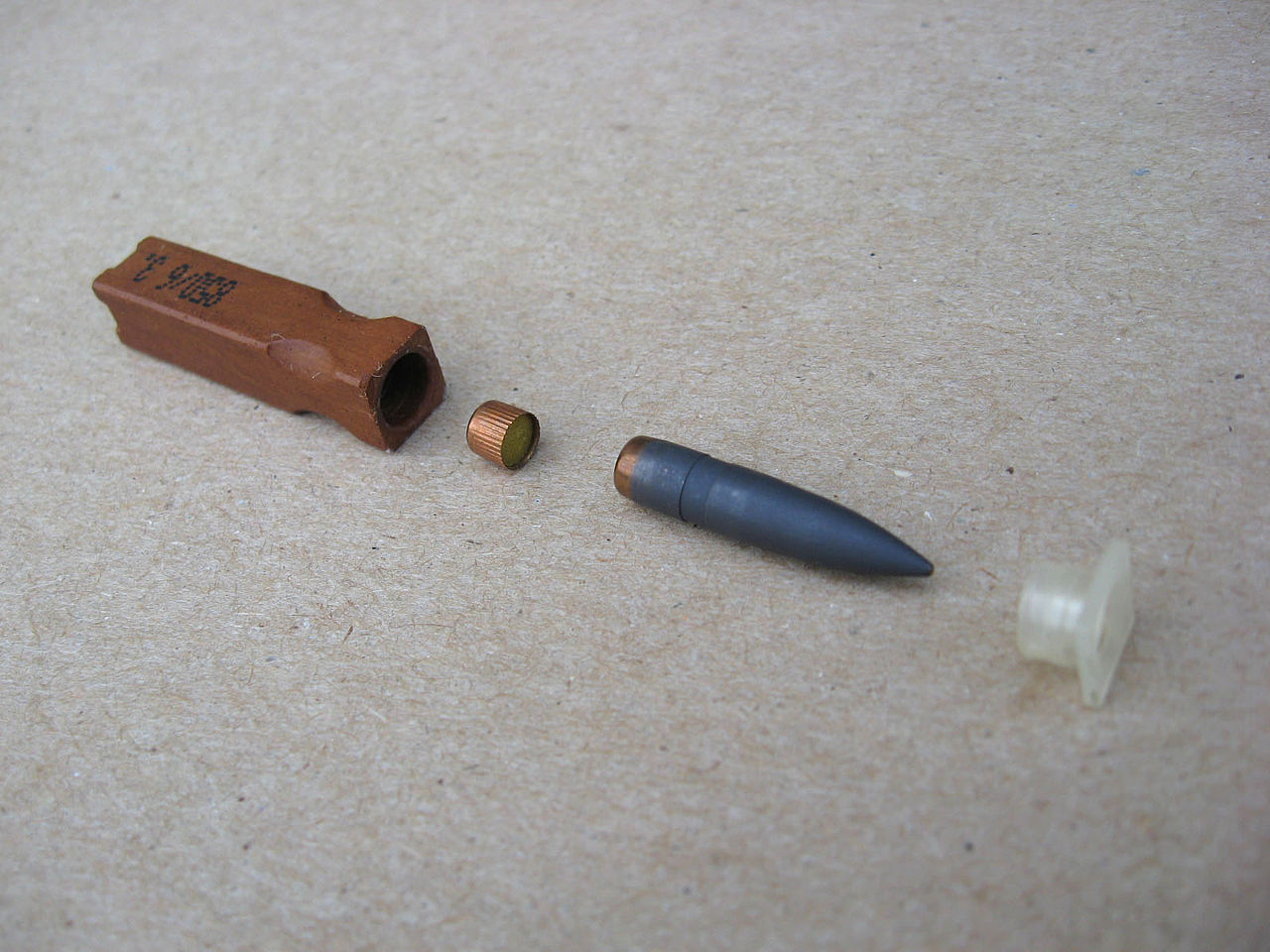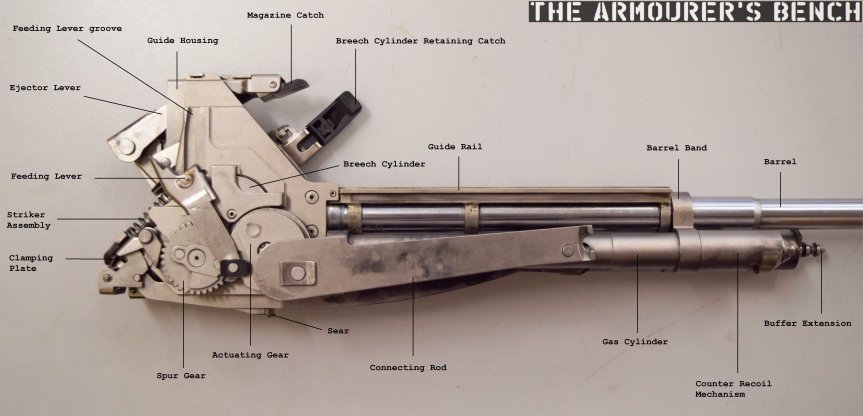Kraut Space Magic, as the meme goes, gave us the famed HK G11 rifle. The G11 was too Space-Age for the time and remains to this day. Even HK recently acknowledged the joke with a collectible hat featuring an astronaut armed with a G11. The space-magic clock of death tried its hardest to become a NATO service weapon, but we just aren’t ready for that.
The HK G11
The HK G11 program started way back in the 1960s, as the Germans were trying to propel the arms industry forward. NATO was looking for a second standard small-caliber ammunition to follow its adoption of the 7.62 round. Those pesky Germans wanted to go with caseless ammunition, but NATO said no.
Yet, HK persisted, and for almost 30 years, they produced various caseless ammo types, as well as various prototypes. They entered the G11 and its numerous designs in various competitions, but the rifle never really succeeded.
The Army’s Advanced Combat Rifle (ACR) program aimed to double hit probability. Yet, the program itself ended, none of the competitors were capable of doubling hit probability and none saw adoption. In 1993 the HK G11 was hung up in HK’s gray room, and the world moved on.

Only 20 G11s were ever produced, and ammunition was designed on demand for testing procedures. Obtaining either will require some hefty contacts, knowledge of importation laws, and likely more money than sense.
The G11 utilized a bullpup design with a top-loading magazine. HK used a healthy amount of polymer to reduce weight and formed what’s essentially a shell around the action. The rifle weighed eight pounds and was 30 inches long with a 21-inch barrel.
The Caseless Ammo
The caseless ammunition the G11 utilized was fascinating. Gone was the metal casing, and instead, the cartridge design used a bullet embedded into a brick of propellant with a primer and plastic cap that centered the projectile.

The projectile size varied between test models. We had the 4.73 x33, 4.92×34, and 4.73×25 cartridges that sat in 45-, 50-, or a massive squad support-sized 90-round magazine. However, the ammunition was a weak point. It had a tendency to cook off when the chamber got hot. It was also very susceptible to moisture which could cause failures.
Ballistically the round also often failed to tumble as it struck soft targets. Rounds would zip right through soft targets and fail to cause significant wound effects.
The HK G11 in Action
The HK G11 feeds quite oddly. The magazine is a giant stick one that is inserted horizontally, instead of vertically, at the very top of the weapon and lies parallel with the barrel. The rounds sit 90 degrees to the bore and are oriented vertically. This requires the famed “clock” design that utilizes a rotary chamber to get the cartridge oriented and ready to fire.

For the first shot, the soldier had to use a rotary cocking handle to chamber the first round. The rotary charging handle, and later the action, drop a round into a revolving chamber. The chamber then rotates 90 degrees and orients with the barrel.
When the operator pulls the trigger on the G11, the firing pin ignites the primer, which ignites a powder booster charge that pushes the bullet into the barrel. The block of propellant breaks to give a larger ignition surface area and then ignites, propelling the bullet downrange.

As the round races gown the barrel of the G11, the recoil pushes the barrel, magazine, chamber, and operating mechanism rearward within the weapon. This dissipates the energy for a single shot and full-auto, but interestingly in burst mode, the gun does not buffer until all three rounds are fired. If you watch old videos of the G11 firing, you can see the magazine moving rearward with every shot. However, everything else is concealed within the gun.

The G11 uses gas created by the propellant to rotate the chamber and loading mechanism. Unlike most assault rifles, there is no need to eject or extract a casing. If there is some form of failure, the shooter can rotate the charging handle counterclockwise to clear the weapon.
The Clock of Death
People often joke that the Germans invented a clock that kills when they created the G11. The rotary action for an assault rifle is certainly a one-of-a-kind design. The G11 used 450 individual parts, with over 140 being used for the breech assembly. For comparison, the M16 has just over 100 parts total.

The action is intimidating from a technical perspective. It looks like a steampunk mess of gears, cogs, and metal. There was never a chance the average soldier could strip this thing down and clean it. Additionally, HK wasn’t clear how long maintenance would take or how exactly repairs and armorers’ functions would work. HK did claim that the rifle’s internals were not exposed to the environment because the rifle does not have an extraction and ejection system, so the need to clean was less than standard rifles.
HK’s odd design makes the weapon capable of using its odd ammunition and deliver that blistering high fire rate. That high rate of fire also required the user to change the chamber every 3,500 rounds. That’s not a lot of ammunition, and making the chamber a replaceable part was an interesting decision.
That Blistering Fast Fire Rate
The HK G11 has three fire modes. First, we have the simple semi-automatic; next, we have full auto; and finally, a burst mode. The fully automatic mode cycled at a very controllable 460 rounds per minute.

However, the burst mode was blistering fast. It fired at 2,100 rounds per minute. That’s 36 rounds per second. The G11 waiting to buffer until all three rounds were fired helped reduce recoil and keep the burst on target.
Speaking of recoil, while I’ve never fired a G11, I’ve watched a video of U.S. Army soldiers with the rifle. These guys either do not know how to shoot, or the recoil of the file is rather rough. It seems to beat the shooters’ shoulders. In the prone position, it made the poor soldier jump with every shot.
Until Tomorrow
The HK G11 was a concept that came too soon. The rifle never stood a chance, but it was revolutionary. To this day, we are trying to develop caseless ammunition to reduce weight and make firearms design more efficient. It’s not been mastered yet, but without the HK G11, we’d be generations behind.










COMMENTS
You must become a subscriber or login to view or post comments on this article.